Name Krishna Devaraya Reign 26 July 1509–1529 Children Tirumala Raya | Role Ruler | |
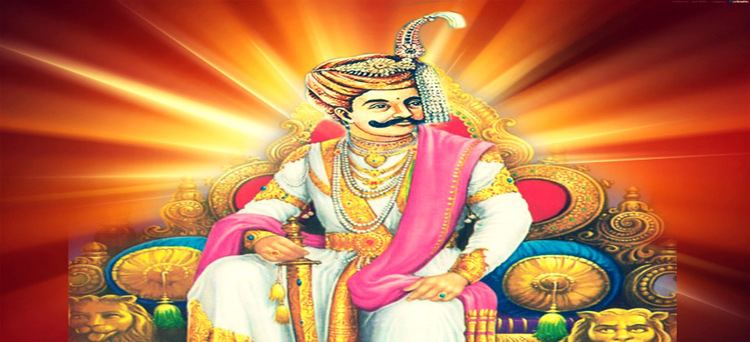 | ||
Consort Chinna DeviTirumala DeviAnnapurna Devi People also search for Parents Tuluva Narasa Nayaka, Nagala Devi Died 1529, Hampi (aged 58) | ||
History of Sri Krishnadevaraya - Vijayanagar Empire II HISTORY INDUS II
Krishnadevaraya (16 February 1471 – c. 1529) was the emperor of the Vijayanagara Empire from 1509 to 1529. He was the third ruler of the Tuluva dynasty. Presiding over the empire at its zenith, he is regarded as an icon by many Indians. Krishna Deva Raya earned the titles Kannada Rajya Rama Ramana (lit, "Lord of the Kannada empire"), Andhra Bhoja and Mooru Rayara Ganda (lit, "King of three Kings"). He became the dominant ruler of the peninsula of India by defeating the Sultans of Bijapur, Golconda, the Bahmani Sultanate and the Raja of Odisha. The great south Indian mathematician Nilakantha Somayaji also lived in the Empire of Krishnadevaraya. He was the most powerful of all the Hindu rulers of India at that time. Indeed, when his northern counterpart, Mughal Babur was taking stock of the potentates of north India, Krishnadevaraya was rated the most powerful and had the most extensive empire in the subcontinent.
Contents
- History of Sri Krishnadevaraya Vijayanagar Empire II HISTORY INDUS II
- Sri Krishnadevaraya History
- Family and marriages
- Foreign affairs
- Success in Deccan
- War with Feudatories
- War with Kalinga
- Final conflict
- Internal affairs
- Art and literature
- Kannada literature
- Telugu literature
- Amuktamalyada
- Tamil literature
- Sanskrit literature
- Religion and culture
- References

Portuguese travellers Domingo Paes and Fernao Nuniz also visited the Vijayanagara Empire during his reign. Krishna Deva Raya benefited from the able prime minister Timmarusu, who was regarded by the emperor as a father figure and was responsible for his coronation. Krishna Deva Raya was the son of Tuluva Narasa Nayaka, an army commander under Saluva Narasimha Deva Raya, who later took control of the empire to prevent its disintegration and became the founder of the Tuluva Dynasty, the third Hindu Dynasty to rule Vijayanagara. The emperor's coronation took place on the birthday of Hindu God Krishna. He built a beautiful suburb near Vijayanagara called Nagalapura.The king was of medium height, had a cheerful disposition, and was reputed to be respectful to foreign visitors, ruthless in maintaining the law, and prone to fits of anger. He maintained himself to a high level of physical fitness through daily exercises. Travelogues indicate that the king was not only an able administrator, but also an excellent general, leading from the front in battle and even attending to the wounded. The Telugu poet Mukku Timmana Nandi Thimmana praised him as the destroyer of the Turks.
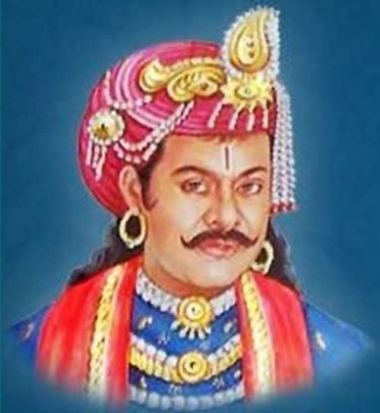
శ్రీ కృష్ణదేవరాయలు చరిత్ర || Sri Krishnadevaraya History
Family and marriages
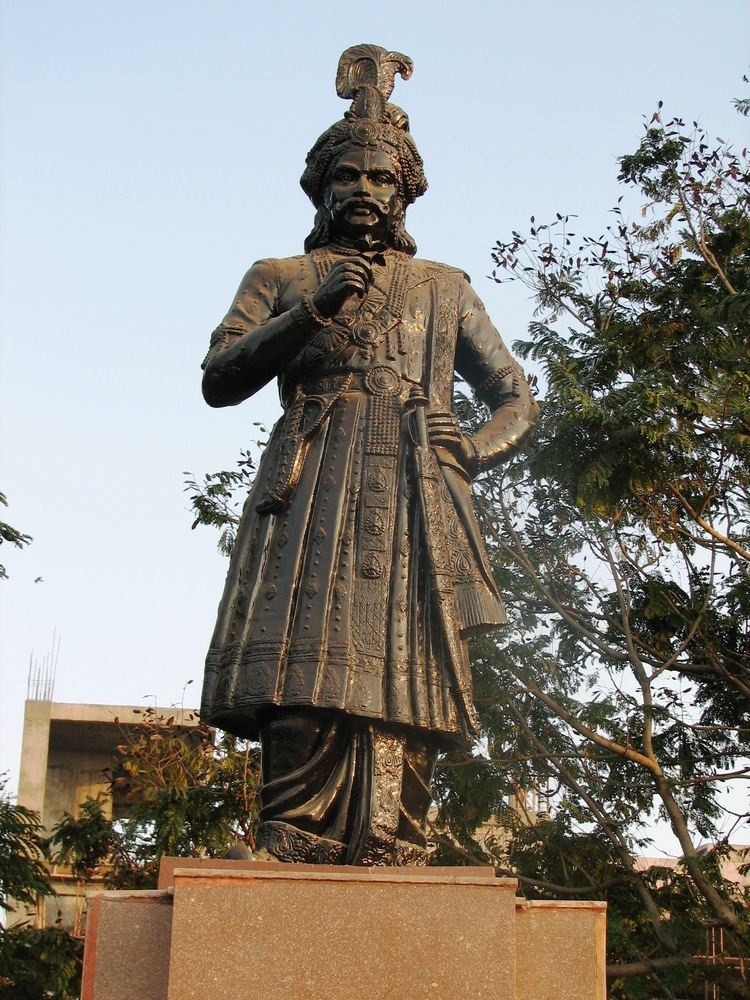
Krishnadevaraya had two queens Tirumala Devi and Chinna Devi, but the Amuktamalyada, a text attributed to Krishnadevaraya, mentions three queens: Tirumala, Annapurna and Kamala. Domingo Paes wrote that he had 12 queens and Fernao Nuniz recorded that, immediately after his accession, Krishnadevaraya married a courtesan of his youth, Chinna Devi.
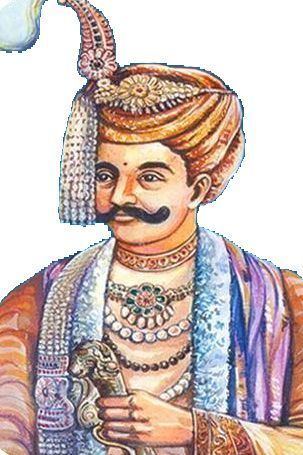
However, it is confirmed that Krishnadevaraya's senior wife and chief queen (patta mahishi) was Tirumala Devi (also known as Tirumalamba) whom he had married most probably in 1498. She was one of the daughters of King Veerappodeya, who ruled Srirangapattana. Tirumala Devi bore her husband three children: a daughter and two sons. The daughter, Tirumalamba (named after her mother) married Araviti Ranga's son, Ramaraya who, after the marriage, came to be known as Aliya Rama Raya.
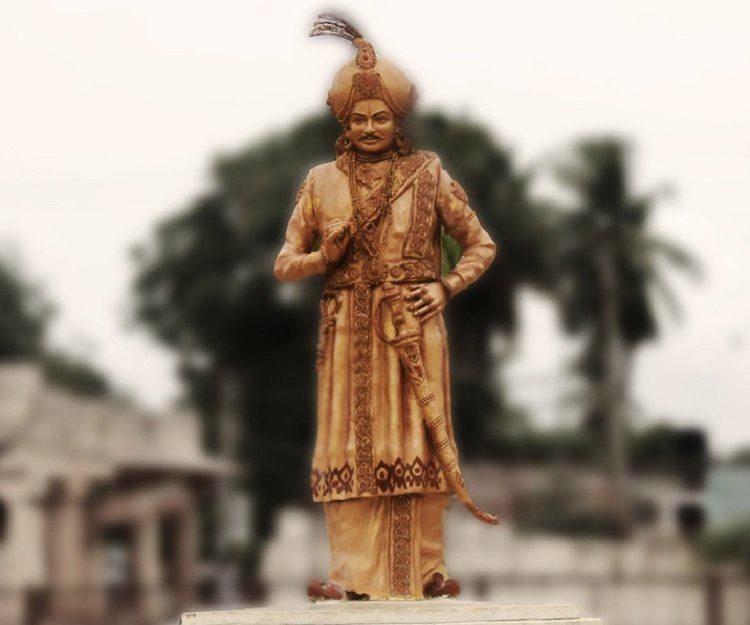
Tirumala, the eldest son and heir-apparent was born in 1518. The prince died while he was young. The death of his heir seems to have greatly unsettled Krishnadevaraya and the last five years of his reign were somewhat disturbed and unhappy on this account, during which period the administration was carried on, in his name, by his brother Achyuta Deva Raya. One more son was born to Tirumala Devi towards the end of Krishnadevaraya's life time. His name was according to some sources, Ramachandra. He also died young, at the age of eighteen months.
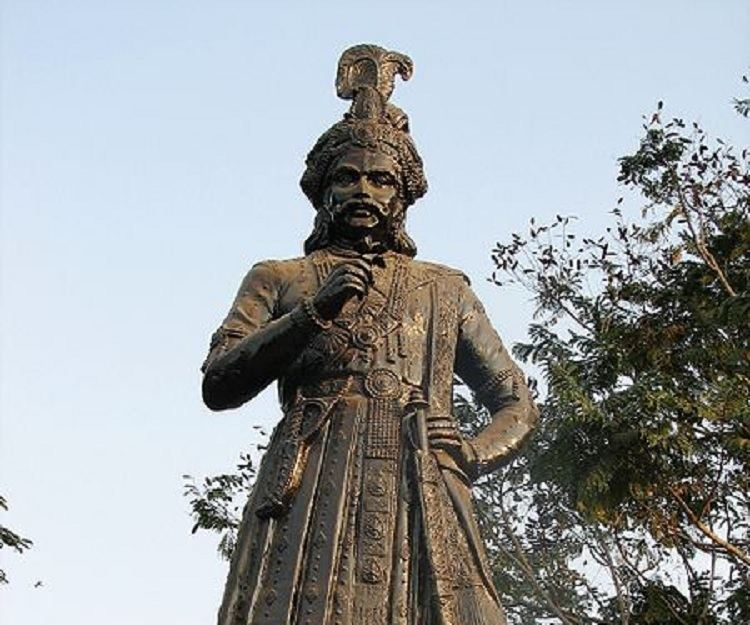
Tirumala Devi was the most honoured wife of Krishnadevaraya. The suburb of Tirumala-devi pattana was laid out during the reign of Krishnadevaraya in honour of Tirumala Devi, while Nagalpura was named after Krishnadevaraya's mother Nagala Devi.
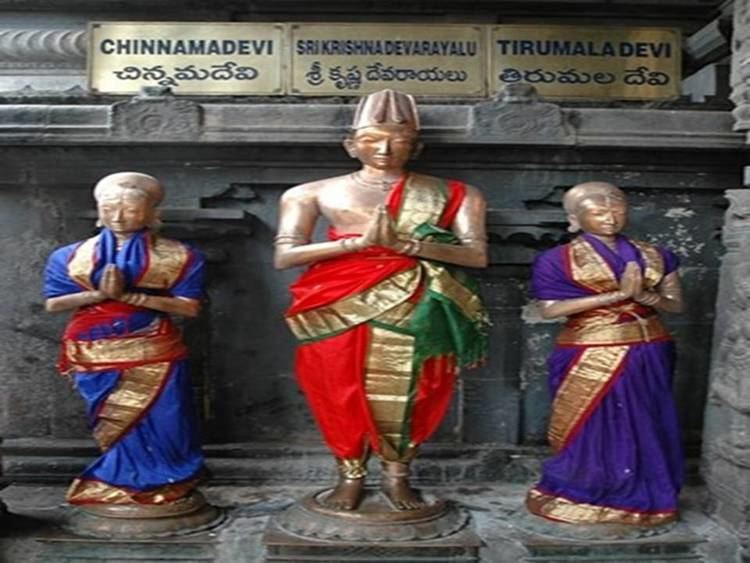
Chinna Devi, a courtesan, was Krishnadevaraya's penultimate wife. Chinna Devi's daughter was given in marriage to Ramaraya's younger brother Tirumala Deva Raya.
Foreign affairs

The rule of Krishna Deva Raya marks a period of much military success in Vijayanagara history. On occasion, the king was known to change battle plans abruptly and turn a losing battle into victory. The first decade of his rule was one of long sieges, bloody conquests and victories. He reorganized the army and recruited his troopers from several south Indian communities like Kabbili, Morasa and Tulu in order to make his cavalry efficient in the encounters against the Turks. His main enemies were the Bahamani Sultans (who, though divided into five small kingdoms, remained a constant threat), the Gajapatis of Odisha, who had been involved in constant conflict since the rule of Saluva Narasimha Deva Raya and the Portuguese, a rising maritime power which controlled much of the sea trade. The feudal chiefs of Ummattur, Reddys of Kondavidu and Velamas of Bhuvanagiri who rebelled against Vijayanagar rule were conquered and subdued.
Success in Deccan
The annual affair of the raid and plunder of Vijayanagar towns and villages by the Deccan sultans came to an end during the Raya's rule. He defeated the last remnant of Bahmani Sultanate power which led to the collapse of the Bahmani Sultanate. In 1509 Krishnadevaraya's armies clashed with the Sultan of Bijapur at Diwani and the Sultan Mahmud was severely injured and defeated. Yusuf Adil Khan was killed and the Raichur Doab was annexed.
Taking advantage of the victory and the disunity of the Bahamani Sultans, the Raya invaded Bidar, Gulbarga and Bijapur and earned the title "establisher of the Yavana kingdom" when he released Sultan Mahmud and made him de facto ruler. The title advertised the boast that he was now the political arbiter of all the Deccan. The Sultan of Golconda Sultan Quli Qutb Shah was defeated by Timmarusu who was the prime minister of Sri Krishnadevaraya.
War with Feudatories
He subdued local rulers and Velamas of Bhuvanagiri who were the feudatory of Gajapati kings of Odisha, and seized lands up to the Krishna River. Ganga Raja, the Ummattur chief, fought Krishna Deva Raya on the banks of the Kaveri and was defeated. The chief later drowned in the Kaveri in 1512. The region was made a part of the Srirangapatna province. In 1516-1517, he pushed beyond the Godavari river.
War with Kalinga
The Surya Vamsi Gajapatis of Odisha ruled a vast land comprising Andhra region, most of Telangana region, the whole of Odisha, parts of present West Bengal, Jharkhand and Chhattisgarh. Krishna Deva Raya's success at Ummatur provided the necessary impetus to carry his campaign into the Telangana region which was in control of Gajapati Prathapa Rudra Dev. The Vijayanagar army laid siege to the Udayagiri fort in 1512. The campaign lasted for a year before the Gajapati army disintegrated due to starvation. Krishna Deva Raya offered prayers at Tirupati thereafter along with his wives Tirumala Devi and Chinnamma Devi. The Gajapati army was then met at Kondaviduraju where the armies of Vijayanagara, after establishing a siege for a few months and heavy with initial defeats began to retreat, until Timmarusu upon discovering a secret entrance to the unguarded eastern gate of the fort launched a night attack culminating with the capture of the fort and the imprisonment of the greatest swordsman of his time, Prince Virabhadra, the son of Gajapati Emperor of Kalinga-Utkal,Gajapati Prataprudra Deva. Saluva Timmarasa took over as governor of Kondavidu thereafter. The Vijayanagar army then accosted the Gajapati army at Kondapalli area and laid another siege. Krishnadevaraya then planned for an invasion of mainland Kalinga-Utkal but the Gajapati Emperor, Prataparudra, privy of this plan had built up a strategy to rout the Vijayanagara army and along with it its king, Krishnadevaraya. The confrontation was to happen at the fort of Kalinganagar. But the wily Timmarasu secured the information by bribing a Telugu deserter, formerly under the service of the mighty Prataprudra deva. Prataprudra was driven to Cuttack, the capital of the Gajapati empire and eventually surrendered to Vijaynagar, giving his daughter Princess Annapurna Devi in marriage to Sri Krishna Deva Raya. As per treaty Krishna river became boundary of Vijaynagar and Odisha Kingdom.
Krishna Deva Raya established friendly relations with the Portuguese, who set up the Portuguese Dominion of India in Goa in 1510. The Emperor obtained guns and Arabian horses from the Portuguese merchants. He also utilized Portuguese expertise in improving water supply to Vijayanagara City.
Final conflict
The complicated alliances of the empire and the five Deccan sultanates meant that he was continually at war, in one of these campaigns, he defeated Golconda and captured its commander Madurul-Mulk, crushed Bijapur and its Sultan Ismail Adil Shah and restored Bahmani sultanate to Muhammad Shah.
The highlight of his conquests occurred on 19 May 1520 where he secured the fortress of Raichur from Ismail Adil Shah of Bijapur after a difficult siege during which 16,000 Vijayanagar soldiers were killed. The exploits of the chief military commander, Pemmasani Ramalinga Nayudu, during the Battle of Raichur were suitably rewarded by the grateful emperor. During the campaign against Raichur, it is said that 703,000 foot soldiers, 32,600 cavalry and 551 elephants were used (See The Battle of Raichur). Finally, in his last battle, he razed to the ground the fortress of Gulbarga, the early capital of the Bahmani sultanate. His empire extended over the whole of South India.
In 1524 he made his son Tirumala Raya the Yuvaraja though the crown prince did not survive for long. He was poisoned to death. Suspecting the involvement of Timmarasu, Krishna Deva Raya had his trusted commander and adviser blinded. At the same time, Krishnadevaraya was preparing for an attack on Belgaum that was in the Adil Shah’s possession; Krishnadevaraya took seriously ill. He died soon after in 1529. Before his death, he nominated his brother, Achyuta Deva Raya as his successor.
Internal affairs
During his reign he kept a strict control over his ministers who were severely punished for any misdeeds. He abolished some of the obnoxious taxes such as the marriage fee. To increase the revenue he brought new lands under cultivation by ordering deforestation of some areas. A large-scale work to obtain water for irrigation around Vijayanagar was also undertaken by him. He was tolerant of all religions and showed respect towards Islam and Christianity. Foreign travelers such as Paes, Nunez and Barbosa who visited Vijayanagar speak highly of the efficiency of administration and prosperity of the people during his reign. In spite of his preoccupations with the defense and reorganization of the territories conquered by him, he founded a new town called Nagalapur. Paes summarises the king's attitude to matters of law and order by the sentence, "The king maintains the law by killing." Offences against property (designed to maintain stability) and for murder ranged from cutting of a foot and hand for theft and beheading for murder (except for those occurring as a result of duel). Paes could not estimate the size of Vijayanagar as his view was obscured by the hills but estimated the city to be at least as large as Rome. Furthermore, he considered Vijayanagar to be "the best provided city in the world" with a population of not less than a half a million. The empire was divided into a number of provinces often under members of the royal family and into further subdivisions. The administrative languages of the Empire were Kannada and Telugu. Telugu was a popular literary medium, reaching its peak under the patronage of Krishnadevaraya.
Sewe I remarks that Krishna Deva Raya was not only a monarch de jure, but he was also a de facto sovereign with extensive powers and strong personal influence. With the active cooperation of Prime Minister Timmarasu he administered the Kingdom well, maintained peace in the land and increased the prosperity of the people
The administration of the empire was carried on along the lines indicated in his Amuktamalyada. He was the opinion that the King should always rule with an eye towards Dharma. His concern for the welfare of the people is amply proved by his extensive annual tours all over the empire, during which he studied everything personally and tried to redress the grievances of the people and to punish the evil doers. With regard to the promotion of the economic progress of his people, Krishnadevaraya says:" The extent of the kingdom is the means for the acquisition of wealth. Therefore, even if the land is limited in extent, excavate tanks and canals and increase the prosperity of the poor by leasing him the land for low ari and koru, so that you may obtain wealth as well as religious merit."
The Portuguese Chronicler Domingo Paes praises Krishna Deva Raya as, “the most feared and perfect King… a great ruler and a man of much justice”. Though a follower of Vaishnavism he showed respect to all sects, and petty religious prejudices never influenced him, either in granting gifts or in his choice of companions and officers. According to Barbosa, “The King allows such freedom that every man may come and go, live according to his own creed, without suffering any annoyance”.
Art and literature
The rule of Krishnadevaraya was an age of prolific literature in many languages, although it is also known as a golden age of Telugu literature. Many Telugu, Sanskrit, Kannada and Tamil poets enjoyed the patronage of the emperor. The emperor was fluent in many languages. There remains a debate whether he was of Telugu, Kannadiga or Tuluva lineage. His mastery and love of Telugu language and literature, preference to Telugu nobles in his court, preponderance of Telugu speaking commanders and warriors in his army owe much to his mother's influence.
The poet Muku Timmana praised him as a great general and stated: "O Krishnaraya, you Man-Lion. You destroyed the Turks from far away with just your great name`s power. Oh Lord of the elephant king, just from seeing you the multitude of elephants ran away in horror."
Kannada literature
He patronised Kannada poets Mallanarya who wrote Veera-saivamruta, Bhava-chinta-ratna and Satyendra Chola-kathe, Chatu Vittal-anatha who wrote Bhagavata, Timmanna Kavi who wrote a eulogy of his king in Krishna Raya Bharata. Vyasatirtha, the great saint from Mysore belonging to the Madhwa order of Udupi was his Rajaguru. Krishna Deva Rayana Dinachari in Kannada is a recently discovered work. The record highlights the contemporary society during Krishna Deva Raya's time in his personal diary. However it is not yet clear if the record was written by the king himself.
Telugu literature
Krishna Deva Raya’s reign is considered the golden age of Telugu literature. Eight poets known as Astadiggajalu (eight elephants in the eight cardinal points such as North, South etc.) were part of his court (known as Bhuvana-vijayamu). According to the Vaishnavite religion there are eight elephants in eight corners in space and hold the earth in its place. Similarly these eight poets were the eight pillars of his literary assembly. Who constituted Ashtadiggajas is not certain. But, it is popularly believed to include these : Allasani Peddana, Nandi Thimmana, Madayyagari Mallana, Dhurjati, Ayyala-raju Rama-Bhadrudu, Pingali Surana, Ramaraja Bhushanudu and Tenali Rama Krishna.
Among these eight poets Allasani Peddana is considered to be the greatest and is given the title of Andhra Kavita Pitamaha (the father of Telugu poetry). Manu-charitramu which was patronised to Sri Krishna Devaraya is his popular prabandha work. Nandi Timmana wrote Paari-jaata-apaharan-amu. Madayya-gari Mallana wrote Raja-sekhara Charitramu. Dhurjati wrote Kalahasti Mahatyamu and Ayyal-raju Rama-bhadrudu wrote Rama-abhyuday-amu. Pingali Surana wrote the still remarkable Raghava-pandaveeyamu, a dual work with double meaning built into the text, describing both the Ramayana and the Mahabharata. Bhattumurty alias Rama-raja-bhushanudu wrote Kavyalankara-sangrahamu, Vasu-charitramu, and Harischandra-nalopakhyanamu. Among these works the last one is a dual work which tells simultaneously the story of King Harishchandra and Nala and Damayanti. Tenali Ramakrishna first wrote Udbhataradhya Charitramu, a Shaivite work and later wrote Vaishnava devotional texts Pandu-ranga Mahatmyamu, and Ghatikachala Mahatmyamu. The period of the Empire is known as “Prabandha Period,” because of the quality of the prabandha literature produced during this time. Tenali Ramakrishna remains one of the most popular folk figures in India today, a quick-witted courtier ready even to outwit the all-powerful emperor. Among Dhurjati's works, a set of poems rather a collection of 100 poems called the "srikalahastheeshwara satakamu" (satakamu means set of 100 poems) is the most famous.
Amuktamalyada
While Krishnadevaraya]] was travelling via Vijayawada during his Kalinga campaign (c. 1516), he came to know about the holy temple of Śrī Āndhra Viṣhṇu and visited Srikakulam village for a few days. He performed the Ekadasi Vratam during that time. It is here that Viṣhṇu appeared to the emperor in an early morning dream. Within Āmuktamālyada itself it was mentioned that on a Harivāsara, Krishnadevaraya had the Darsana of Śrī Āndhra Maha Viṣhṇu. Harivāsara is the time between the last four muhurtas of Ekadasi and the first four muhurtas of Dwadasi, i.e., 6 hours and 24 minutes. This incident of visiting the temple must be between Ahobilam Śaasanam (dated December 1515) and Simhāchalam Śaasanam (dated 30 March 1516). Maybe January 1516, he might have visited the temple on the Dvadasi day. Beyond this no other valid references are available for exact date of visit.
Krishnadevaraya said of the composition of Amuktamalyada that
Sometime ago, I was determined to conquer the Kalinga territory. On the way, I camped for a few days with my army at Vijayawada. Then I went to visit Andhra Vishnu, who lives in Srikakula. Observing the fast of the Vishnu's Day (Dvadasi), in the fourth and last watch of that God's night (Harivaasaram), Andhra Vishnu came to me in my dream. His body was a radiant black, blacker than the rain cloud. His eyes wise and sparkling, put the lotus to shame. He was clothed in the best golden silk, finer still than the down on his eagle's wings. The red sunrise is pale compared to ruby on his chest.
Tamil literature
Krishna Deva Raya patronised the Tamil poet Haridasa and Tamil literature soon began to flourish as the years passed by.
Sanskrit literature
In Sanskrit, Vyasatirtha wrote Bhedo-jjivana, Tat-parya-chandrika, Nyaya-mrita (a work directed against Advaita philosophy) and Tarka-tandava. Krishna Deva Raya himself an accomplished scholar wrote Madalasa Charita, Satyavadu Parinaya and Rasamanjari and Jambavati Kalyana.
Religion and culture
Krishna Deva Raya respected all sects of Hinduism and lavished on the Tirumala Venkateswara Temple numerous objects of priceless value, ranging from diamond studded crowns to golden swords. Additionally, he is known to have commissioned the making of statues of himself and his two wives at the temple complex.These statues are still visible at the temple at the exit. He also contributed in building parts of Srisailam temple complex.
Krishna Deva Raya was formally initiated into the Vaishnava Sampradaya by Vyasatirtha. He patronised poets and scholars in Kannada, Telugu, Tamil and Sanskrit.
Sri Vyasatirtha was his Kula-Guru.
